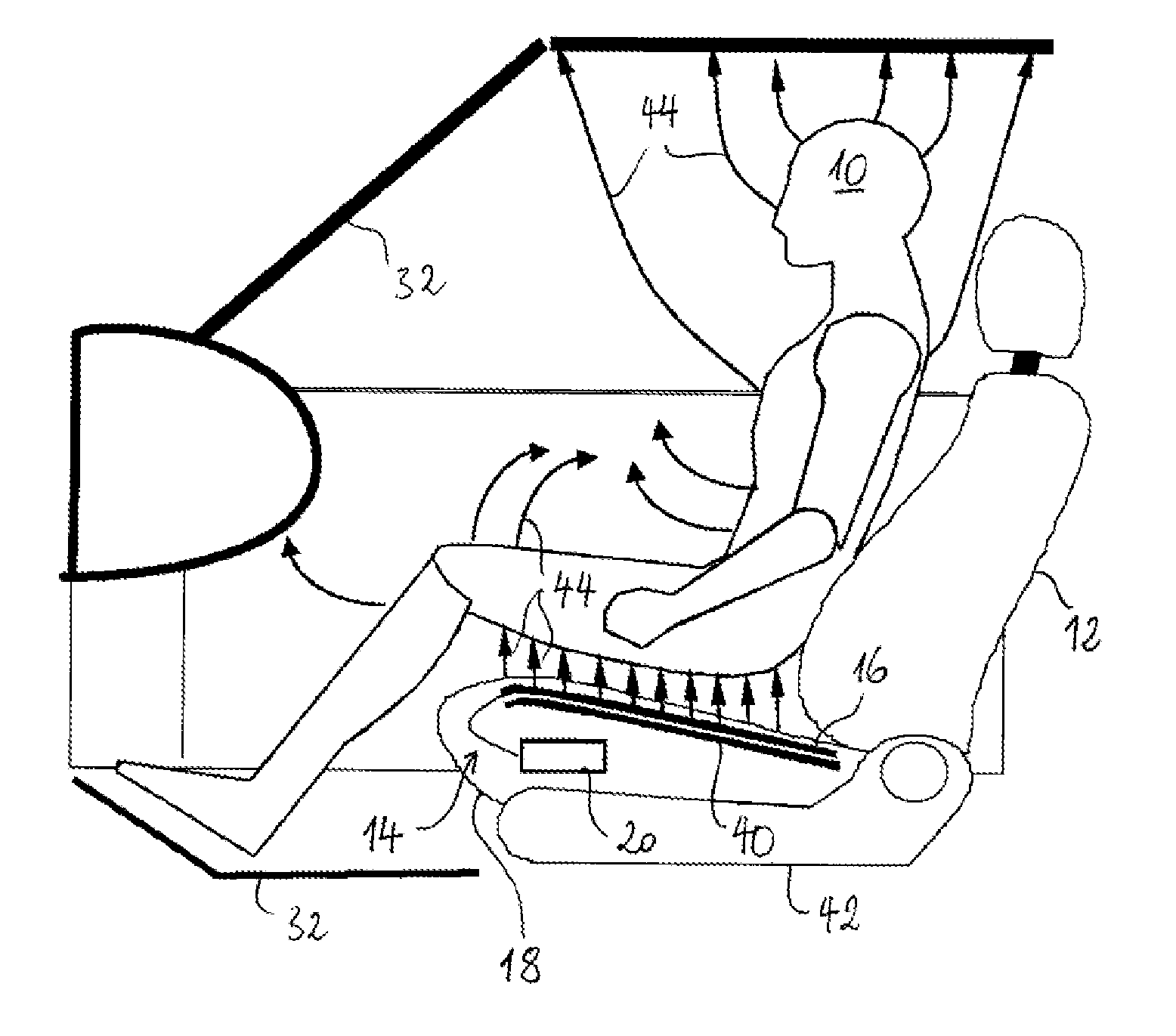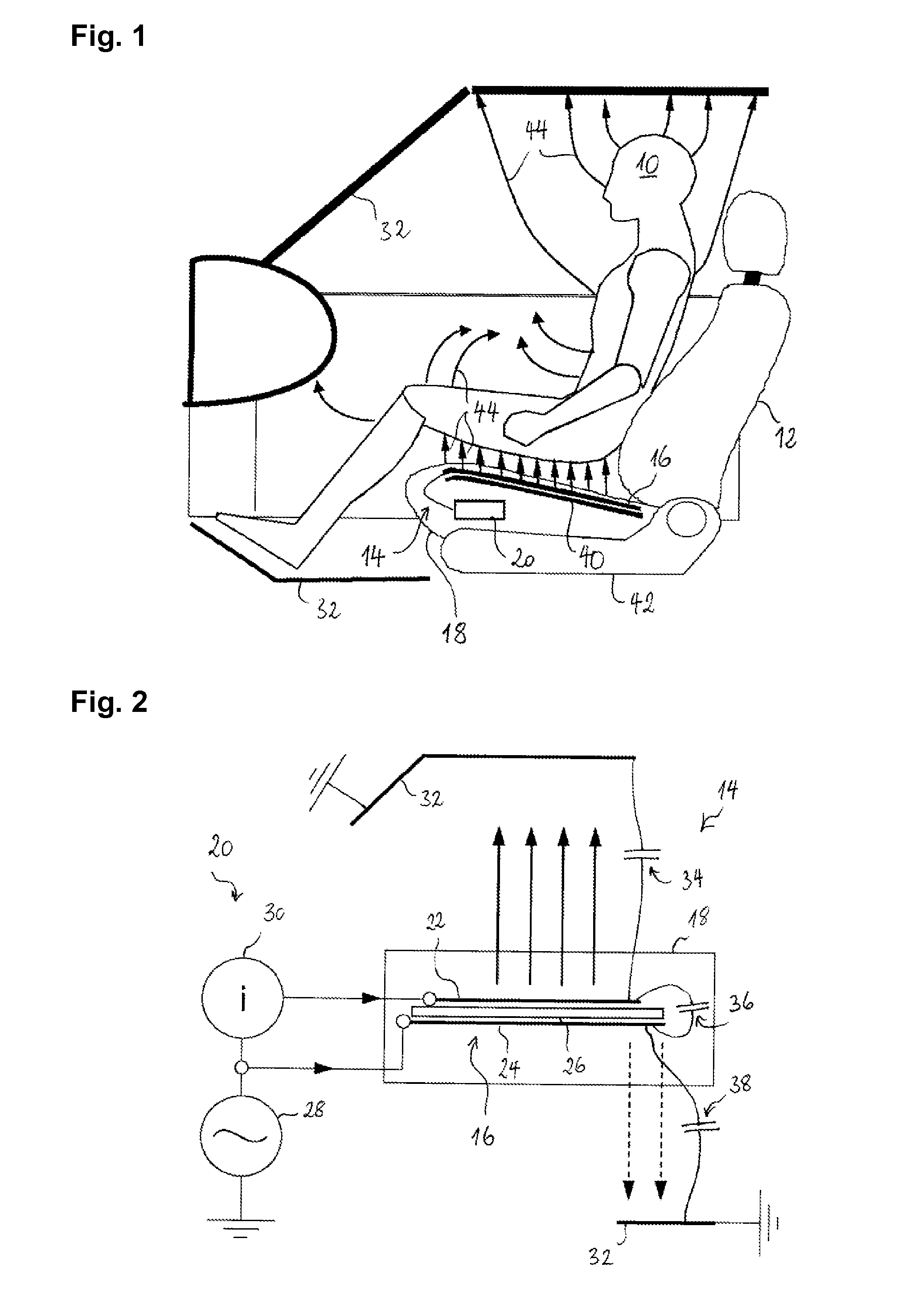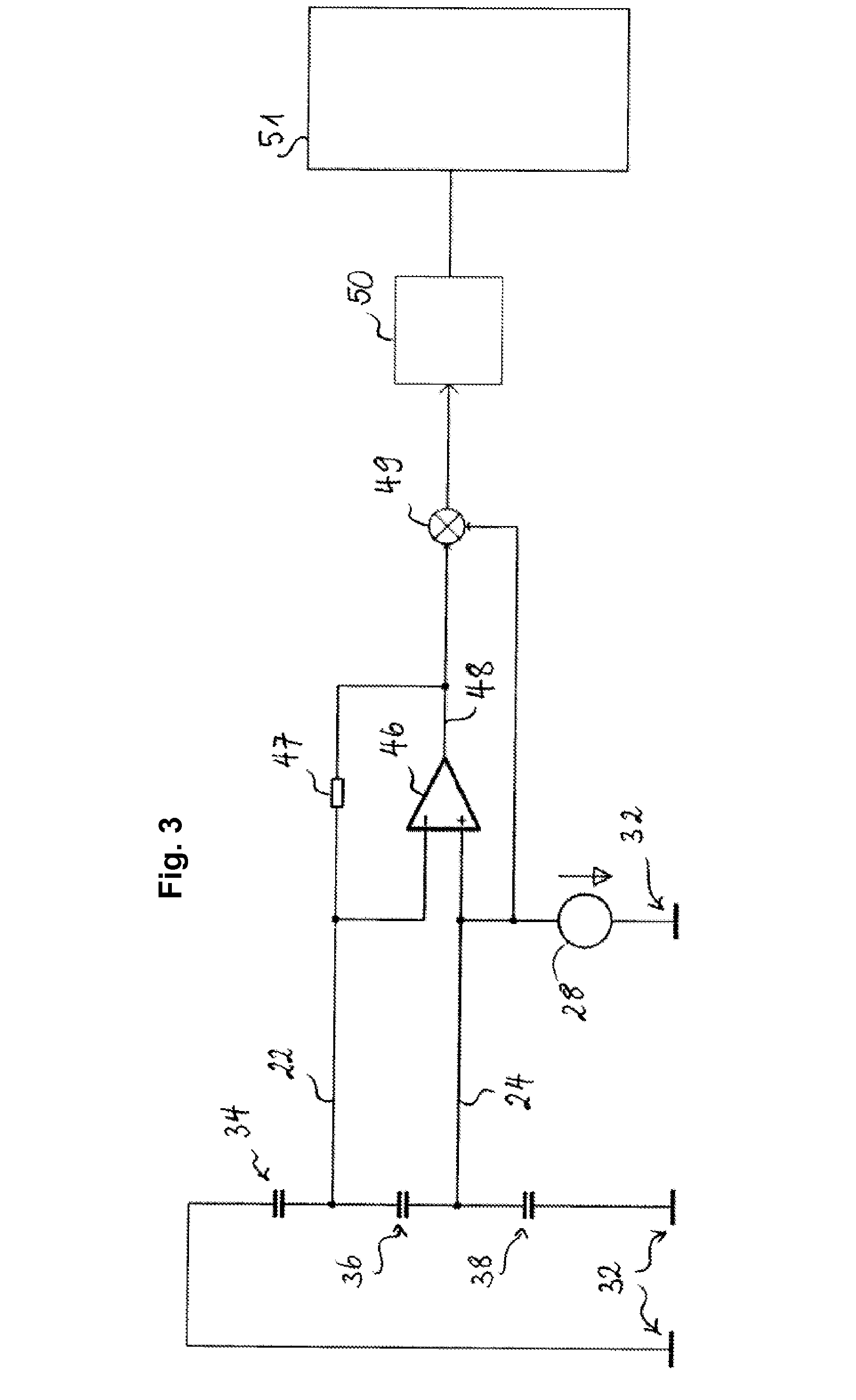Method and system for detecting an occupant in a vehicle seat
a technology for detecting an occupant and a vehicle seat, which is applied in the direction of vehicular safety arrangements, pedestrian/occupant safety arrangements, instruments, etc., can solve the problems of disturbing capacitance fluctuations, and achieve the effect of improving the detection of the occupancy sta
- Summary
- Abstract
- Description
- Claims
- Application Information
AI Technical Summary
Benefits of technology
Problems solved by technology
Method used
Image
Examples
first embodiment
[0036]FIG. 3 shows a (simplified) equivalent circuit diagram of a capacitive occupant detection system. Oscillator 28 applies an
AC voltage to the second electrode 24. Amplifier 46 and feedback impedance
47 form together a transimpedance amplifier, which maintains the voltage on the first electrode 22 substantially equal to the voltage on the second electrode
24. The transimpedance amplifier thus converts the current flowing into the first electrode 22 into a voltage at the amplifier output 48. Since the first electrode 22 is at any moment of this measurement at substantially the same potential as the second electrode 24, the current through the second capacitance 38 remains essentially zero. Therefore, the current flowing into the first electrode depends almost exclusively on the first capacitance 34. Mixer 49 and low pass filter 50 convert the AC output of amplifier 46 to a DC voltage, which is dependent on the first capacitance 34. This voltage is fed to an analog-to-digital convert...
second embodiment
[0041]FIG. 5 shows a (simplified) equivalent circuit diagram of a capacitive occupant detection system. The evaluation circuit of
FIG. 5 measures the first capacitance 34 the sum of the third capacitance 38
and the series capacitance of the first and the second capacitances 34, 36 at the same time. Unlike in the system of FIG. 3, the oscillator 28 is not directly connected to the second electrode 24 but indirectly through a second transimpedance amplifier, formed of amplifier 56 and impedance 57. The second transimpedance amplifier 56, 57 keeps the voltage on the second electrode 24 at the same level as the output of the oscillator 28 and converts the current flowing into the second electrode 36 into an AC voltage outputted at reference numeral 58. The current that flows into the second electrode 24 corresponds to the sum of (a) the current flowing through the third capacitance 38 and (b) the current through the series of first capacitance 34 and second capacitance 36. Mixer 59 and lo...
PUM
 Login to View More
Login to View More Abstract
Description
Claims
Application Information
 Login to View More
Login to View More - R&D
- Intellectual Property
- Life Sciences
- Materials
- Tech Scout
- Unparalleled Data Quality
- Higher Quality Content
- 60% Fewer Hallucinations
Browse by: Latest US Patents, China's latest patents, Technical Efficacy Thesaurus, Application Domain, Technology Topic, Popular Technical Reports.
© 2025 PatSnap. All rights reserved.Legal|Privacy policy|Modern Slavery Act Transparency Statement|Sitemap|About US| Contact US: help@patsnap.com



